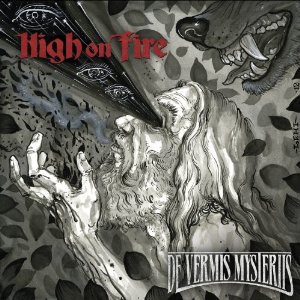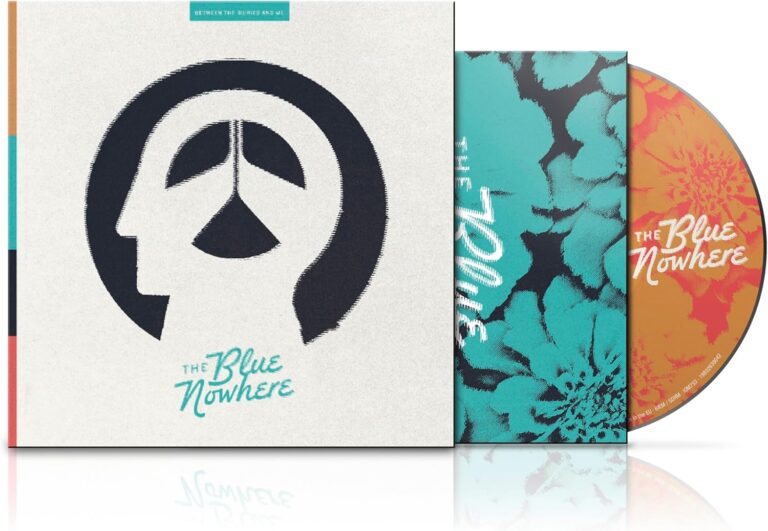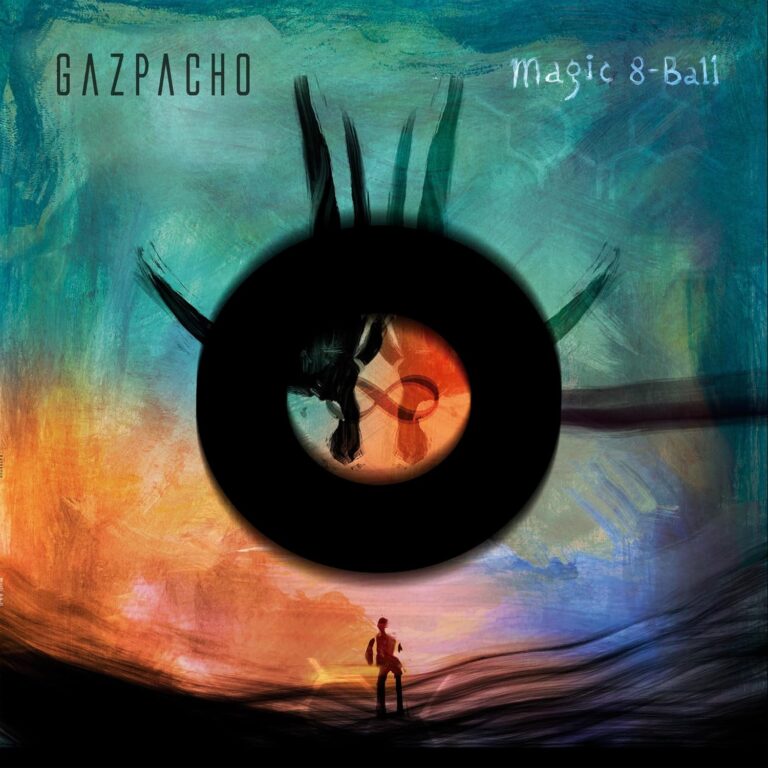Remarkably ‘Snakes for the divine’ came out two years ago. This is not remarkable because two years is a long time to make an album (just ask Guns ‘n’ Roses), but because ‘Snakes for the divine’ was such an unbelievably good, unbelievably dense album that its various charms and mysteries are only now, after many, many listens, starting to fully unravel themselves. This is not because High on fire are unbelievably complex. They are not a latter-day Tool, for example; it’s more that Matt Pike (formerly of Sleep) and his merry cohorts Des Kensel (drums) and Jeff Matz (bass) lay down such a tar-stained, beer-soaked wall of dirty, corrosive sound, that separating out all the layers is like teasing apart a stack of soaked rizla paper.
So, here we are two years later and Matt’s seeming mission to become the heaviest band ever to grace a record deck continues unabated with the much-anticipated ‘De Vermis Mysteriis’, an album that snarls and claws like the savage beast depicted on the mind-blowingly brilliant cover (created by Tim Lehi), arriving to the sound of Des Kensel’s rolling-thunder drum assault and proceeding to deliver ten (we will speak of bonus tracks later) monstrous aural assaults that somehow combines the raw-throated rock ‘n’ roll of Motorhead with the somnambulant riffs of Sleep and Kyuss and the furious proto-psychedelic-metal of Neurosis to form some of the most devastating slabs of sound ever laid down… and that includes ‘snakes for the divine’.
There is no gentle easing in to ‘De vermis Mysteriis’, no lilting intro, just Des’ furious drumming augmented by Matt’s searing guitar and acid-wrecked vocal chords on the immense opener ‘serums of Liao’. Oddly, for all that it is insanely heavy, the track’s most notable achievement is that in between the pile-driving rhythms and distorted layers of guitar the band have craftily interwoven a dense melody that sparks and flashes like catching glimmers of sunlight whilst exploring deep in a heavily wooded forest, and it is this sense of melody that keeps the song cemented in your brain long after the initial sense of oppressive weight has abated. ‘Bloody knuckles’ is the perfect musical representation of the type of fist-fight liable to lead to the titular condition, opening with an almighty Black Sabbath groove before pausing for breath and coming back even heavier than before, the guitars scraping along the ground under their own phenomenal weight and Matt’s voice a furious smear across the surface, blurred with rage and indignation. ‘Fertile green’ is more straight-forward in its devastating approach with Des smashing the drums with the mechanistic precision of The Terminator reprogrammed as a percussionist and Matt unveiling lengthy solos that savage the spirit of the blues with the thousand Yard Stare of the committed metal veteran.
Three songs in and it’s hard not to feel a little punch drunk. The music is monumental, visceral and not a little overwhelming. It’s all so oppressive it dulls even a sunny day with its bruised storm clouds and the feedback haze that announces ‘Madness of an architect’ does little to alleviate this sense of impending doom. A viscous, treacly monstrosity, the song takes over a minute to haul itself out of the quagmire it formed in, both the drums and Jeff’s throbbing bass finally appearing in an effort to drag the slow-burning riff into the half-light to let it breathe. Matt’s vocals, meanwhile, take nearly another minute to appear as the riff transmutes into the sort of almighty groove that has your head swinging before you’re even aware of it. Finally relenting, the band take you on a slower, sun-dappled journey for the mesmerising, instrumental ‘Samsara’ which gently ripples where the rest of the album pulses and surges. It provides much needed relief, not to mention dynamic to an album that relies upon shock and awe tactics to bewilder and overpower the listener – ‘Samsara’ can very rightly be considered the false calm at the eye of the storm. Having thus soothed the listener ‘spiritual rites’ appears with the suddenness and unstoppable force of a tsunami, the harmonic-infused riff a dizzying, furious blast of poisoned air following the sweetness of its predecessor.
The third (and final) act of the album appears amidst the reflective splendour of ‘King of days’, a slowed-down take on doom that perfectly augments the frenetic blasts of feral rock ‘n’ roll found elsewhere. As powerful as any other song here, or perhaps even more so due to the elegant riffs which seem to speak of faded days gone by, Matt turns in another blinding solo that sees the track fade towards a brilliantly realised martial drum outro that fades away in deference to the title track which floods slowly over the listener like molten lava. A slow-moving, unassailably heavy offering, it is the clearest example of High on fire’s steamroller approach, sharing much common ground with Mastadon and Neurosis’ sludge-laden assault upon the senses, and, like both of those acts, one can only imagine how tumultuous this track will sound live. ‘Romulus and Remus’ tells the tragic tale of the founding of Rome via a stuttering riff of monumental proportions before ‘warborn’ closes the album, not with a furious, all-out riff assault, but with the guitars stripped away completely on the verses for a finale that is pure Sabbath – oppressive, devastating and utterly brilliant.
Once again High On Fire have crafted an album that has caused superlative overload. Like its predecessor, ‘De vermis Mysteriis’ is liable to find itself on the turntable a lot over the next few years as I endeavour to understand its mysteries. There is real power here, the band play with guts and feeling, every song awash with coded emotions and passionate zeal and the result is yet another High On Fire album added to the utterly essential list. A supreme achievement.
European edition notes:
Generously the album comes with four bonus tracks, three live cuts and one studio offering, and whilst this represents good value for the fans, you can’t help but wish they hadn’t been tacked onto the end of so perfectly constructed an album. The argument about bonus cuts, of course, will never be settled completely – the question of whether is it better to have them on the same disc as a result of cost constraints or not have them at all is no easy one to answer as everyone likes to get something extra – especially in these days of austerity and restraint – but there is always something that feels forced about tacking live tracks to the end of a disc as they necessarily sound even rougher in comparison to the studio tracks whilst, more importantly, the integrity of an album to fans and artists alike is a sacred thing that should not be disturbed with freebies. In this instance I favour the latter argument – the album itself being near perfection and the addition of extras an intrusion upon a well-thought-out sequencing job, although if the bonus tracks will encourage even a few more people to buy this masterly release then they will have been worth it.





